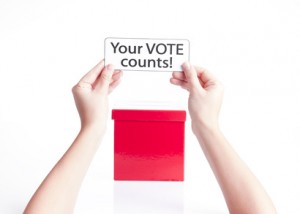David Kingman explores some preliminary research which suggests that young people may have voted in extraordinarily large numbers in the 2015 general election
Prior to the 2015 general election, many commentators expressed significant concerns that large numbers of young potential voters might chose to stay at home instead of going to the ballot box because of high levels of political disengagement and changes to the electoral registration system. However, some preliminary research has suggested that young people may actually have defied these predictions by voting in much larger numbers than people had forecast. What could this mean for young people?
British election study
Before the 2015 general election took place, there was a widespread belief that young people would find it difficult to get their voices heard. To a large extent, this was what happened at the 2010 general election five years ago, when just 44% of voters aged 18– 24 – the youngest age category of people who are eligible to vote – went to the polls, compared to the overall average of 65% among the electorate as a whole.
These concerns appeared to be well-founded. The results of the parliamentary commission looking at voter engagement in the UK identified young people as one of the categories of voters who are least engaged by the present democratic system. Concerns were also raised that many young people would suddenly find they were not registered to vote following the implementation of the new system of individual voter registration, which may have seen 1 million names fall off the electoral register.
However, although it is still much too soon after the election for any major research to have been done into how specific age cohorts voted, evidence produced by the British Election Study – which analyses information on how the British electorate casts its ballots at each election – suggests that the youngest category of voters may have defied the expectations of pessimists by producing a bumper turnout.
Using a survey of young peoples’ voting intentions which was cross-referenced with their likelihood of having actually voted at the 2010 general election, the British Election Study forecasted that turnout among 18–24 year-olds may have been as high as 65%. If this modelled projection turned out to be accurate then it would mean that turnout among young voters matched the average level of turnout among the whole electorate, which was the highest it’s been at any general election since 1997.
Why might young people have become more likely to vote?
If it is substantiated by further research, then such a high level of youth turnout would have to be seen as an enormous vindication for the various campaigns that attempted to register more young voters, such as Bite the Ballot. It is highly likely that, by highlighting the issue of too many young people not being registered to vote, they encouraged a lot of extra people to actually go out and vote who may never have considered it before, as well as attracting young people who were already more politically engaged.
Undoubtedly, large numbers of young people would also have turned out for the same reasons that this election had very high overall turnout – the widespread predictions that it was likely to be very close and the sense that it could have far-reaching implications for Britain’s political future.
Finally, it will be very interesting to learn from future research into how young people voted at the 2015 general election whether they disproportionately backed the smaller parties – which may be better at engaging with young people through social media than their larger rivals, and may have been able to galvanise young supporters through a sense of youthful idealism.
